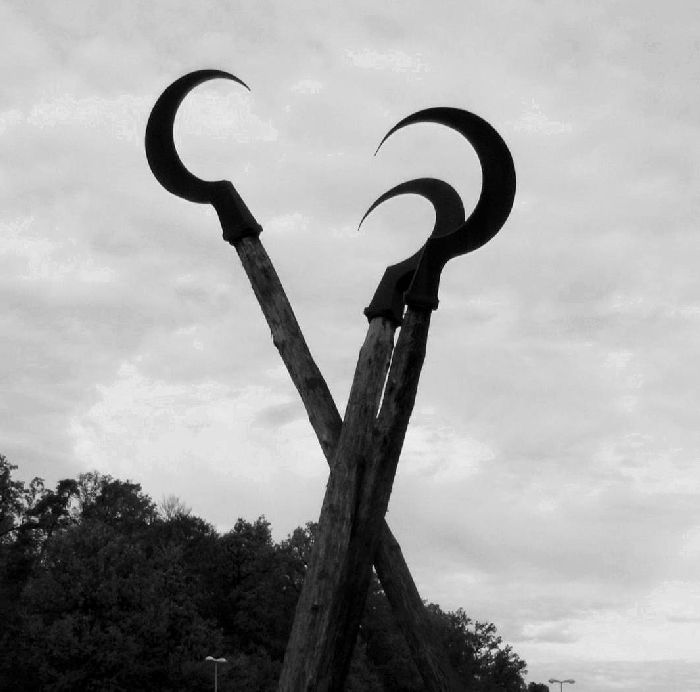These pictures were taken on 10 June, 2007 in the main cemetery in Bochum. Those who
died as forced laborers in Bochum were buried in three different "fields" or sections
within the cemetery.

|
The most obvious of the three is near the center of the cemetery.
|

|
There is a book with metal pages for looking up the names of those buried here.
|

|
Each page shows the name in both Latin and Cyrillic (Russian) letters, the age and
date of death. The book is sorted by nationality. It has sections for Soviet, Polish,
French, Greek, Yugoslav and Czechoslovakian victims.
|

|
The first page of the book reads in Russian and German, "We remember the victims
of forced labor in Bochum, 1941-1945."
|

|
The column in the middle shows stylized barbed wire and reads on one side, "Remember
the war dead of foreign peoples resting here (who were) captured and taken away
(and) died in our country" (Gedenke der hier ruhenden Kriegstoten fremder
Völker - Gefangen, verschleppt in unserem Lande starben.)
|

|
The opposite side reads, "Overcome hate, seek peace. 1939-1945" (Überwindet den Hass, suchet
den Frieden.)
|

|
This is one of the two other sections of forced labor dead near the edge of the cemetery.
It is the smallest and most tucked away. It too has a metal book listing the names of those buried here: Belgians, French,
Yugoslavs, Dutch, Poles, Soviets (sic), Armenians, Italians, Latvians and Czechs. The
labeling is only partly "post Cold War."
|

|
The wording in the ground is, "Here lie members of foreign peoples, victims of
a pointless war. They warn us to keep peace" (Hier ruhen Angehörige fremder Völker /
Opfer eines sinnlosen Krieges, sie mahnen zum Frieden.)
|

|
This section is a bit larger. It also has a metal book listing the dead by name.
|

|
The German and Russian texts on the central stone are different. The German reads:
"Remember while you are here the war dead buried here. They are sons of parents,
husbands of wives, fathers of children of the Soviet people, captured and taken
away, they perished in a foreign land. Their bones rest here far away from home,
but God's earth is everywhere. Approach the grave as you would the grave of your son,
your husband, your father. If you remember them, then you fulfill the purpose of
the victims from among our people as well. The dead of all peoples warn us to keep peace."
(Gedenke beim Verweilen den hier ruhenden Kriegstoten. Es sind Söhne von Vätern,
Männer von Frauen, Väter von Kindern des Sowjetvolks. Gefangen und verschleppt kamen
sie um im fremden Land. Ihre Gebeine liegen hier fern der Heimat, doch Gottes Erde
ist überall. Tritt an ihr Grab wie du treten würdest an das Grab deines Sohnes, deines
Mannes, deines Vaters. Gedenkst du ihrer dann erfüllst du den Sinn auch der Opfer
unseres Volkes. Die Kriegstoten aller Völker mahnen zum Frieden."
|

|
The Russian text is more political: "For the here buried
Soviet citizens, victims of the national socialist regime and its violence. In memory of
the dead, a reminder to the living" (Pokaiashim zdes' sovetskim grazhdanam
zhertvam natsional-sotsialistskogo rezhima i naciliia. Mertvim - v pamiat', zhivim -
v nazidanie.).
|

|
.
|













